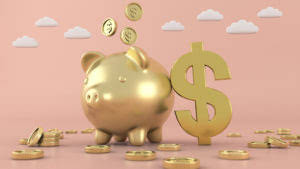
✝ To check the rates and terms you may qualify for, SoFi conducts a soft credit pull that will not affect your credit score. • The dividends are not the type listed by the IRS under dividends that are not qualified dividends. You are now leaving the SoFi website and entering a third-party website.
- Special dividends are not a commitment by a company to continue offering dividend payment at that rate.
- Instead of focusing on a losing company, focus on a company with a competitive advantage that can withstand the competition.
- Similarly, for some dividend shareholders, dividends may be the only source of regular and reliable income.
- This occurs because the same earnings are taxed at both the corporate and individual levels, which can influence a company’s dividend policy and shareholders’ investment decisions.
How to Invest in Dividend Stocks
A dividend is a bookkeeping portion of a company’s profits that is paid to its shareholders, usually quarterly. If you receive more than $10 in dividends, your brokerage will send you a 1099-DIV form with relevant information for completing your tax returns. If you own 100 shares of a company that is trading at $1 a share and paying a dividend of 25%, you would be paid $25. Dividends are typically issued quarterly but can also be disbursed monthly or annually. Distributions are announced in advance and determined by the company’s board of directors.
Cash Dividends
- You will not receive a dividend payment if you buy a stock after the ex-dividend date.
- We may earn a commission when you click on a link or make a purchase through the links on our site.
- The ex-dividend date is the date after which the traded share will not pay a dividend to its new owner.
- For example, in Canada, the dividend tax credit allows individuals to reduce their tax liability on dividends received from Canadian corporations.
- The key is to find good, solid companies that have a history of paying and increasing their dividends.
To record the accounting for declared dividends and retained earnings, the company must debit its retained earnings. It is because dividends, as mentioned above, are a decrease in the retained earnings of a company. Similarly, the company must also create a liability for the amount of the declared dividend. For example, if a company declares dividends of $10,000, the accounting treatment will be as follows. Lower payout ratios should indicate more sustainable dividends—or a low payout ratio could mean that a company needs to increase its dividend. A payout ratio over 100% indicates a company is returning more money to shareholders than it is earning, and it may need to lower its dividend—or that its earnings are under pressure.

Ask Any Financial Question

When a company distributes dividends, it does so from its after-tax profits, meaning the company has already paid corporate income tax on these earnings. However, shareholders receiving dividends are also subject to taxation, leading to a phenomenon known as double taxation. This occurs because the same earnings are taxed at both the corporate and individual levels, which can influence a company’s dividend policy and shareholders’ investment decisions.
As the payment date approaches, the company prepares to disburse the dividends to its shareholders. On the payment date, the company will need to settle the liability recorded earlier. This is done by debiting the Dividends Payable account and crediting the Cash account. This entry effectively reduces the company’s cash balance, as the funds are transferred to the shareholders, and eliminates the liability that was previously recorded. After the company pays the dividend to shareholders, the dividends payable account is debited for $500,000. The cash and cash equivalent account is also reduced for the same amount through a credit entry of $500,000.
Are dividends taxed?
Additionally, companies must provide detailed disclosures about their dividend policies, the amount of dividends declared and paid, and any restrictions on the payment https://www.bookstime.com/ of dividends. These disclosures help investors and analysts understand the company’s approach to profit distribution and assess its financial health and sustainability. Some investors prefer companies that pay dividends because they provide a source of regular income.
- Companies that increase their dividend payments year after year are usually less volatile than the broader market.
- Preferred stock, on the other hand, usually has a greater claim to dividends.
- A dividend is an amount of money paid by a company to its shareholders.
- The amount transferred from retained earnings is based on the fair market value of the additional shares issued.
- NerdWallet, Inc. is an independent publisher and comparison service, not an investment advisor.
- With dividend capture, it’s not necessary to hold shares of a company for a whole year or an entire quarter to earn the dividend.

For example, if a company distributes $100,000 and they have 50,000 eligible shareholders, each shareholder would receive $2. In addition, dividends are more commonly paid out by larger, more mature companies that are growing slowly. Dividends can be found in the shareholders’ equity section of a company’s balance sheet.
Accounting Ratios
Stock market rules say that the buyers must have purchased the share at least what type of account is dividends two days before the record date to receive payment. With nowhere left to open new stores and a production rate that more than meets demand, Walmart uses some of its excess cash to pay dividends as a reward to its many investors. The reason for this discrepancy is that Romney’s income largely came from dividends, interest, and capital gains–all of which are taxed at a much lower rate. To calculate the total dividend for a company, divide the per-share dividend by the market share price. In this example, the share price is $32, and the firm distributes $1.75 per share.


